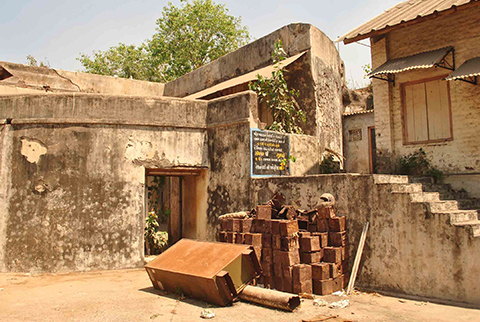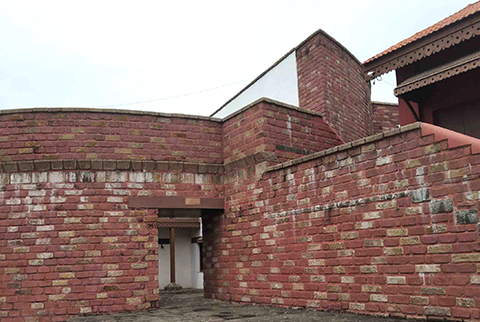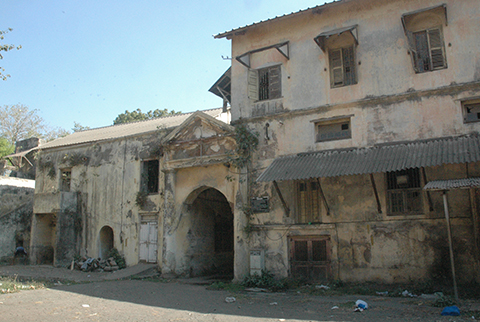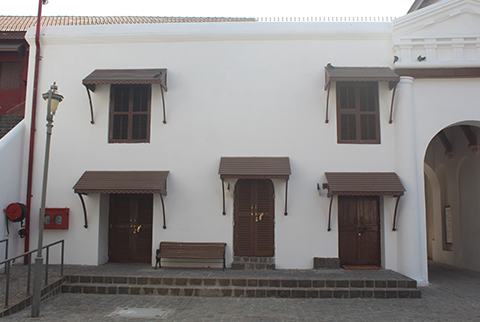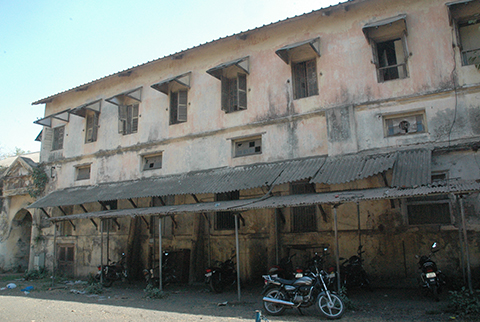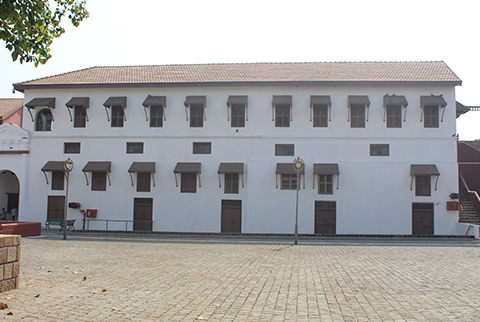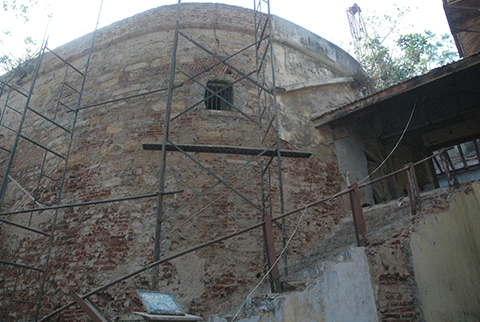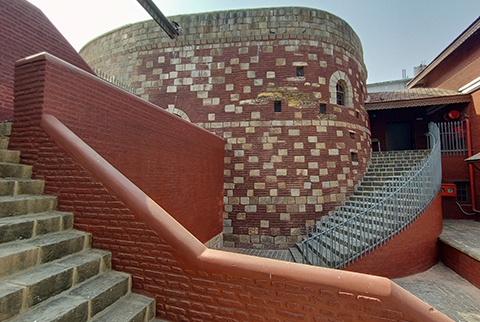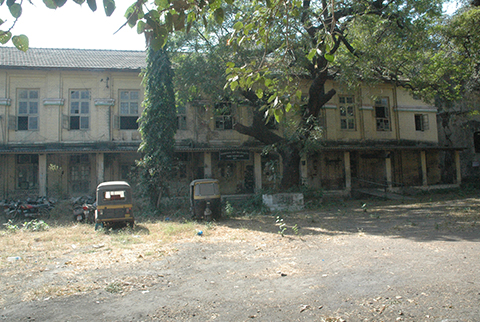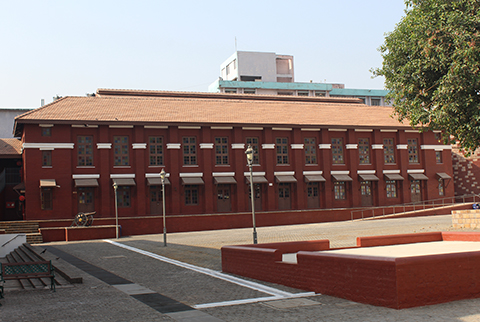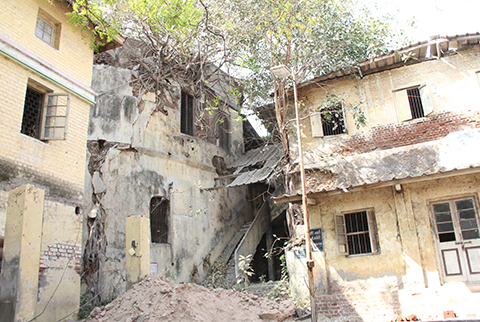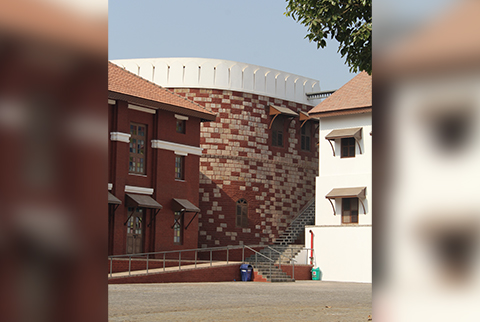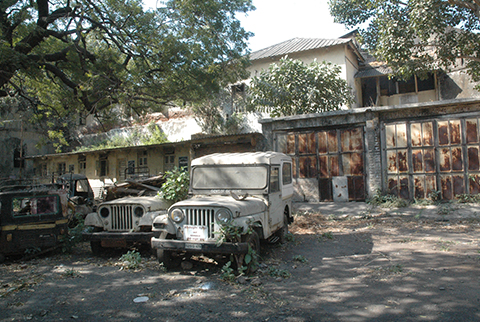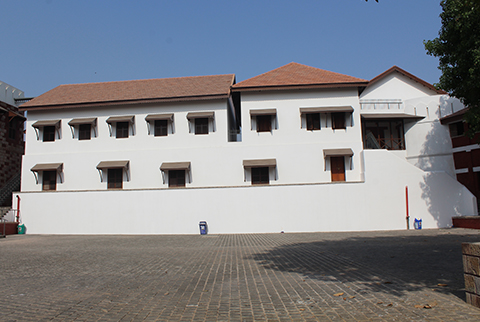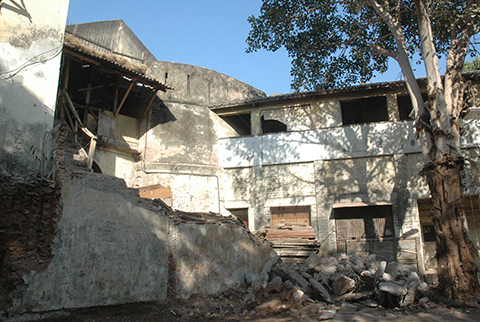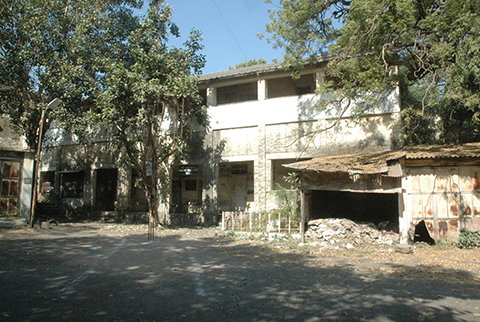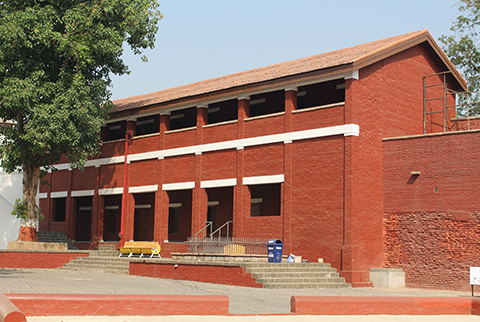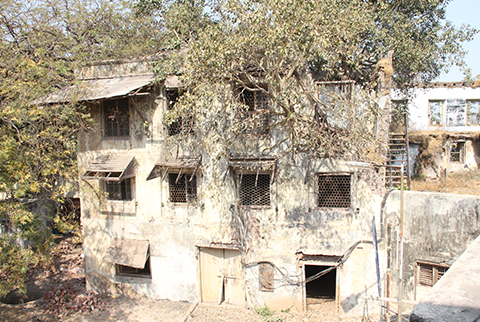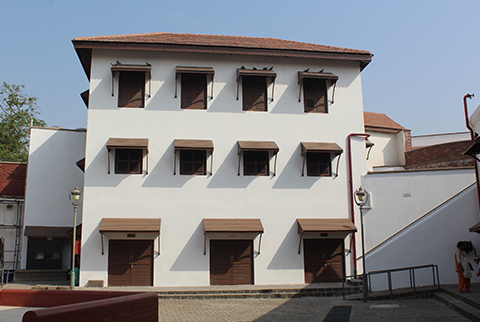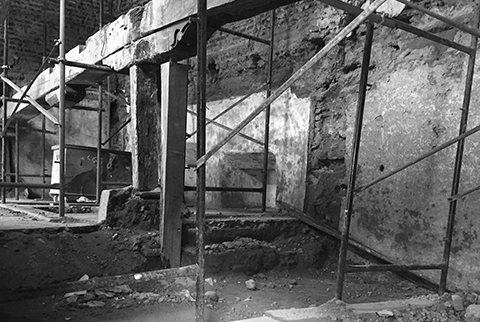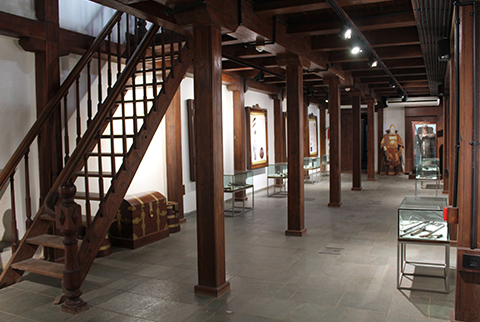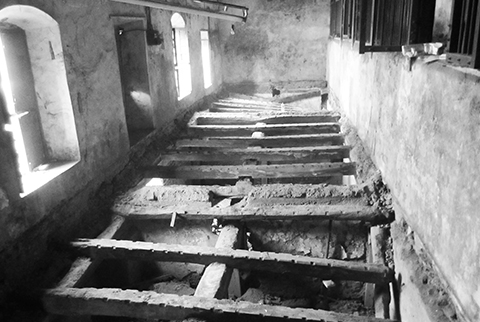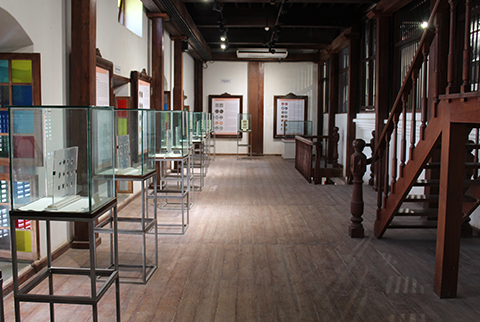Surat Fort Restoration
It was revealed during restoration that one of the bottom parts of the fort belongs to Firozshah Tughlaq era, above it is extended British construction and on one of the sides is of the Gujarat Sultanat i.e. during the times of Khudavand Khan. From all of these, the part which provided the most important information was restored.
Accordingly, restoration was commenced from the part that was made during the era of Firozshah Tughlaq. In this the broadness of mortar used to be thicker. Bricks were thin, about 1 to 1.5 inches and its width was broad. One of the most important thing is that, during that time there was no other spanning system except wood. That’s why wood was used to build roofs. Likewise, this fort was restored according to open building construction system. Jack arch flooring was found in the fort. Some of its parts are also open restored. When flooring plaster was removed from the top portion of the fort, it was revealed that there was something like a court at this place and the style of construction has been traced out as Dutch style. The underground tank too was found inside the fort, possibly it was used for water storage.
One more part was found inside the fort. It has a ventilation system through which cold air enters from the bottom and hot air evacuates from the top of the room. It is designed in such a way that these tunnels are not visible from outside.
There are four burj and two partial burj in the fort and every burj is unique.
Inner portion of the Royal Burj is built in such a way that it seems that there would have been a bathing facility at this place. Facility of hot water and arrangement of hot air to flow outside as well as tunnels to discard cold water were also built.
Restoring the historical heritage of Surat, imparting more glitter to the shining pride of Surat and giving a new identity to this old fort, is a humble effort by Surat Municipal Corporation.
સંરક્ષણની કામગીરી દરમિયાન ખ્યાલ આવ્યો કે કિલ્લાની ઈમારતના નીચેનો ભાગ ફિરોઝશાહ તુઘલકના સમયકાળના છે‚ તેના ઉપર બ્રિટિશકાળનું ચણતર તથા એક બાજુની દિવાલો સલતનત કાળની (ખુદાવંદ ખાનના સમયગાળા) જોવા મળી. આ તમામ મળતા તથ્યોમાંથી જે કોઈપણ જાણકારી અતિ મહત્વની હોય તે ભાગને સંરક્ષિત કરવામાં આવ્યો.
સંરક્ષણકાર્યમાં ઓળખાયેલ તુઘલકકાળના સમયગાળામાં ચૂનાનો થર જાડો વાપરવામાં આવતો હતો‚ ઈંટો પાતળી વપરાતી‚ તેની જાડાઈ ૧ થી ૧.૫ ઈંચ અને પ્હોળાઈ વધુ હોય તેવી વપરાતી. તે સમયગાળાની સૌથી અગત્યની જાણકારી એ મળી કે તે સમય દરમિયાન લાકડાના ઉપયોગ કર્યા સિવાયની કોઈ સ્પાનીંગ સિસ્ટમ ન હતી. તેજ કારણોસર તે સમયગાળાની તમામ છત લાકડાની બનેલી હતી. જે કારણોસર આ કિલ્લાની તમામ સંરક્ષણ પ્રક્રિયા મુલાકાતીઓ જોઈ શકે તે રીતે ઓપન બિલ્ડીંગ રિસ્ટોરેશન સિસ્ટમ તરીકે કરવામાં આવી છે. આ કિલ્લાના કેટલાક ભાગમાં જેક-આર્ચ મળી આવ્યા હતા, જેને ઓપન રિસ્ટોર કરવામાં આવ્યા છે. કિલ્લાના મુખ્ય બિલ્ડીંગના બીજા માળ પરના ફ્લોરીંગનું પ્લાસ્ટર હટાવતા ત્યાં ન્યાયાલય જેવી સુવિધા મળી અને તેની ચણતર શૈલી ડચ શૈલીને મળતી આવી. કિલ્લાના અંદરના ચોગાનમાં પાણીનાં સંગ્રહ માટે ભૂમિગત ટાંકી મળી આવી છે.
કિલ્લામાં વધુ એક ખુબી વાળો ભાગ મળી આવ્યો જેમાં કિલ્લાના ભોંયતળિયે વોલ્ટમાં હવાની અવર જવર માટે ઠંડી હવા નીચેના ભાગમાંથી આવતી તથા ગરમ હવા ઉપરના ભાગમાં નીકળી જાય તેવી વ્યવસ્થા હતી. આ વ્યવસ્થા માટેની સુરંગો બહારથી ન દેખી શકાય તેવી રીતે રચના કરવામાં આવી હતી.
કિલ્લાના સંરક્ષિત થયેલ રોયલ બુર્જમાં હમામની સગવડ મળી આવી. અહી ગરમ પાણી લાવવા માટેની સગવડ, પાણીની વરાળની નિકાસ માટેની સગવડ તથા વપરાયેલા ઠંડા પાણીના નિકાસની સગવડ કરવામાં આવેલી છે.
સુરતના આ ઐતિહાસીક વારસાનું સંરક્ષણ કાર્ય, સુરતના ગૌરવમાં વધુ ચમક લાવશે તથા સુરતના આ ઐતિહાસીક કિલ્લાને નવી ઓળખ આપશે. આ સંરક્ષણ કાર્ય એ સુરત મહાનગરપાલિકાનો આ દિશામાં નમ્ર પ્રયાસ છે.
